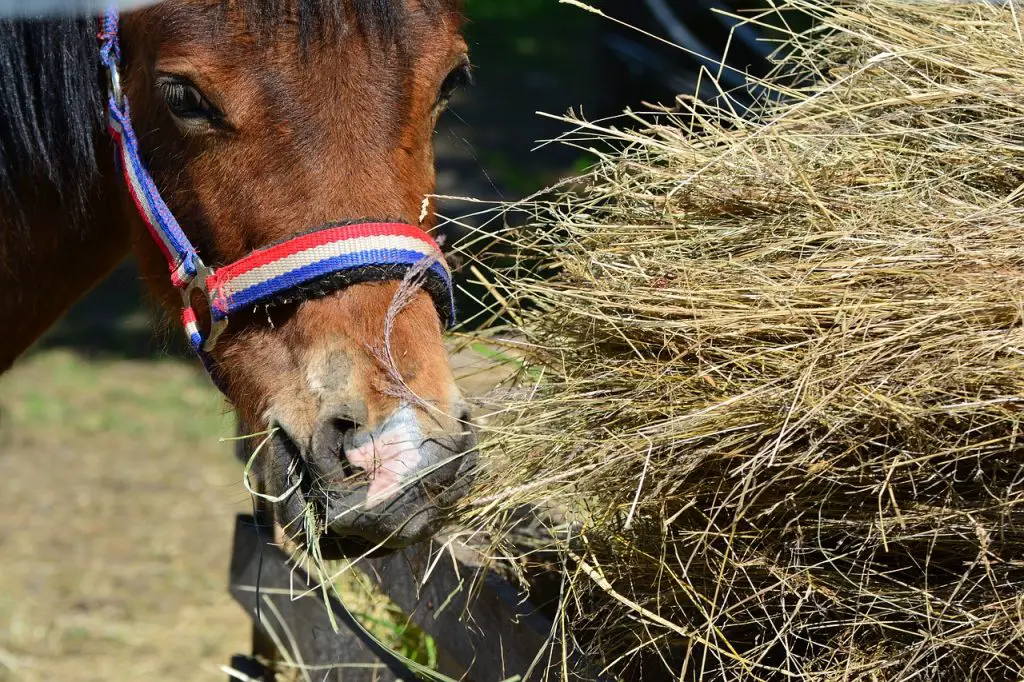Last Updated on February 24, 2022 by Allison Price
So I decided to purchase a horse and have spent the last few days researching this magnificent creature. I have learned so much about horses, including their diet, lifestyle, and living arrangements. I learned a lot from this research about horses and their lifestyles.
I began to research horses’ eating habits as I moved forward. I looked into the horse’s diet and found out what mineral supplements were used. Horse owners often buy hay flakes to feed their horses. Hay bales may have been seen in the fields.
I was new to the world of horses and had no idea what a flakes of hay were. I sought out information from farmers and vendors about the flake of hay as well as how many flakes are in each bale. It wasn’t as easy as I expected, but I was able to absorb all of the information about flakes of hay.

Many new horse owners were struggling to find the right information and guidance. As daunting as it can be, getting a horse is also overwhelming. I have made it easy by sharing all information about hayflakes in this post. Here is a complete answer.Contentsshow
What is a Flake Of Hay?
Although horses have evolved to graze in pasture fields, it is not practical or affordable for many barns. They therefore turn to feeding horses bales and hay.
You may be asking what a flake is. A flake is a small, thin piece of hay that is easy to cut off.
Bales are made from about 10 to 13 “clumps”, which is a mixture of hay and straw. It is safe for you to assume that a flake is a piece of a bale. Flake is often confused with a unit for weight measurement. I hate to tell them that it’s false. These sections, or layers, are called flakes.
How is a Flake made of Hay?
The compression/release phenomenon during bailing causes flakes to form. The process can be broken down into three simple steps: Cut, compress, tie with wire, twine, and then spit it out in a rectangular form.
- Step 1: The first step in making a bale of hay is to cut a row, dry it, then pick it up and place it into the bailing chamber.
- Step 2 The row of hay is then compressed, cut on one end, and pressure is released.
- Step 3 Next, another row of hay must be cut and placed in the chamber. The chamber will then compress the hay and release it. Continue this process until the bale is full-sized. We use hay streamers to prevent moldy hay.
When the bale is tied with twine or wire, it tends to separate into layers. These layers can be separated easily and are called flakes.
How many flakes of Hay are in a bale?
It varies from one flake to the next and from bale to bale. A hay bale typically contains 12 flakes. A hay bale’s average number of flakes is dependent on its size and weight. There would not be 12 flakes in every bale. It would vary from one bale to the next.
A three-string bale of Hay usually contains 17 flakes, each about 8 pounds. Each bale of hay has a different number and weight of flakes as the hay splits into flakes.
A two-string bale of Hay has 16 flakes on average. Each bale weighs in at around 5 lbs. Before purchasing hay, it is important to verify the weight and quantity of flakes in each bale to ensure that the horse receives enough.
You may be curious as to how many flakes are contained in a 20-pound bale of hay. You will find 4 flakes, which is approximately 5 pounds in weight.
Are Flakes All Made Equally?
It is impossible to expect all hay bales or flakes to be created equally. Relatively, hay is fed into different hay bales and flakes. The amount of hay used and the compression of it will determine the size of the flake.
Higher hay yields bigger flakes, while more compression results in denser flakes. Are all flakes the same? It’s not. Each flake and each hay bale is different.
Note A recent study found that horses need hay or pasture about 1.5% to 2.5% of their body weight. Therefore, horses should be fed according to their body weight and not with a fixed number of flakes.
Most Frequently Asked Questions
What is the daily recommended amount of flakes horses should consume?
Horses should only be allowed to eat a small amount of the flakes each day. People usually consume 5 to 6 flakes per day. It is best to weigh the flake first, and to feed hay approximately 1% to 22% of the horse’s body weight.
What is considered a flake?
Mixture of dried legumes and grass, approximately 5 pounds. The hay is then put in a baling chamber and compressed before being released as a flake. To form a bale, different numbers of flakes can be combined.
What does a hay bale weigh in weight?
It all depends on the size of the bale. A large bale will weigh more than a smaller one, so it’s not surprising. In some cases, hay bales can weigh between 40 and 140 pounds.
Hay is compressed with a baler to form flakes. A hay bale is made up of different flake layers. Although the number of flakes within a hay bale is variable, it averages between 12 and 16 flakes per bale.


